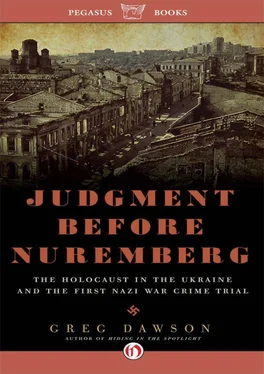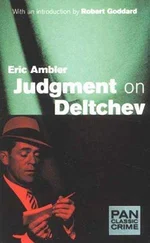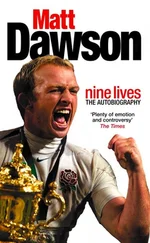These Germans, representatives of the culture of Beethoven and Brahms, Goethe and Mann, sought out and trashed the homes of Chekhov and Tolstoy, Rimsky-Korsakov and Tchaikovsky. My mother has always told me that no writer expresses the Russian soul more truly and sublimely than Pushkin. The Nazis seemed to sense that and saved a special fury for the destruction of the poet’s estate, Mikhailovskoye.
“Mikhailovskoye was very dear to the Russian people,” the Extraordinary Commission said. “Here Pushkin finished the third, fourth, fifth, and sixth chapters of Eugen Onegin. Here, too, he finished his poem Gypsies , and wrote the drama Boris Godunov , plus a large number of epic and lyrical poems. In July 1941, the Hitlerites forced their way into the Pushkin reservation. For three years they made themselves at home and ruined everything. Prior to their retreat from Mikhailovskoye, the Germans completed the destruction and desecration of the Pushkin estate. The German vandals put three bullets in the large portrait of Pushkin hanging in an archway at the entrance to Mikhailovskoye, then they destroyed the archway. The sacrileges perpetrated by the Germans against the national sanctuaries of the Russian people are best demonstrated by the desecration of Pushkin’s tomb. It was found completely covered with refuse. Both stairways leading down to the grave were destroyed. The platform surrounding the grave was covered with refuse, rubble, wooden fragments of ikons, and pieces of sheet metal.”
It’s as if an invading enemy had systematically destroyed Robert Frost’s home in Vermont and Carl Sandburg’s in Illinois, burned the contents of the New York City Library, looted the Metropolitan Museum of Art, smashed the Liberty Bell in Philadelphia, and trashed the Smithsonian in Washington, D.C. Just for starters.
“Even though it be possible, by a tremendous effort, to rebuild the cities and villages destroyed by the Hitlerites, even though it be possible to restore the factories and plants blown up or burned down by them, mankind has lost for all time the irreplaceable art treasures which the Hitlerites so ruthlessly destroyed, as it has lost forever the millions of human beings sent to their death in Auschwitz, Treblinka, Babi Yar or Kerch,” said the Extraordinary Commission.
“The modern Huns have surpassed, in cruelty and vandalism, the darkest pages of history. While arrogantly challenging the future of mankind, they trampled underfoot the finest heritage of mankind’s past. Themselves without faith or ideals, they sacrilegiously destroyed both the churches and the relics of the saints. But in this unparalleled struggle between civilization and barbarism, culture and civilization prevailed.”
Nearly seventy years after that victory, the Nazi barbarism in Ukraine and across Mother Russia still awaits a Picasso and its own Guernica .
Unlike Hitler and Göring, who coveted looted paintings from the East for their own collections, SS Chief Heinrich Himmler was not an aficionado of fine art. According to one visitor to his home, Himmler’s taste ran to books bound in human skin and furniture made of the bones of his victims. But in his own mind at least, Himmler was not without compassion for his fellow man, including the Jews he worked so hard to eliminate from the human gene pool.
The “better angels” of Himmler’s nature spread their wings in August 1941 on a visit to Minsk, less than two months after the Einsatzgruppen had begun the mass murder of Jews as coup de grâce of the Nazi invasion of the Soviet Union. Eager to know how the mission was going, Himmler told the local Einsatzgruppen commander that he would like to witness an execution. The next day he was taken to a forest outside the city where two pits had been dug. More than a hundred prisoners, including two women, had been chosen to face a twelve-man firing squad for Himmler’s viewing pleasure.
As the gunmen took aim at one group of victims, Himmler stepped in and walked up to a young man with light hair and eyes.
“Are you a Jew?” Himmler asked.
“Yes.”
“Are both your parents Jews?”
“Yes.”
“Do you have any ancestors who were not Jews?”
“No.”
“Then even I can’t help you,” Himmler said, his compassion thwarted.
The Reichsführer’s great empathy for the victims did not end there. When the shooting began, his face turned white and he looked down. And when the gunmen shot wildly and managed only to wound two female targets, Himmler was horrified, recalled an SS officer at the scene. “Himmler jumped up and screamed at the squad commander: ‘Don’t torture these women! Fire! Hurry up and kill them!’”
Afterward, the SS officer suggested to the rattled Himmler that he rethink the idea of murdering all the Jews in this fashion.
“ Reichsfuhrer , that was only a hundred.”
“What do you mean by that?”
“Look at the men, how deeply shaken they are! Such men are finished for the rest of their lives. What kind of followers are we creating? Either neurotics or savages!”
Apparently conscience-stricken, Himmler ordered that a “more humane” method of exterminating the Jews be found, one that did not take such a grievous emotional toll on the shooters. The immediate answer was gas—not the state-of-the-art gas chambers of Auschwitz, yet to be built—rather, mobile gas chambers, large trucks customized to pipe carbon monoxide into hermetically sealed compartments holding dozens of victims. The gaswagens were an outgrowth of Operation Euthanasia, a Nazi program under which 70,000 mental patients were killed with the aid of gas. Since the institutions doing the killing had crematoriums to burn the bodies, the program could have been a rehearsal for Auschwitz.
“The men in charge of the Einsatzgruppen in the East were increasingly complaining that the firing squads could not cope with the psychological and moral stress of the mass shootings indefinitely,” said Dr. August Becker, who worked on development of the gaswagens . “I know that a number of members of these squads were themselves committed to mental asylums, and for this reason a new and better method of killing had to be found.” Something less intimate than what was being done all over Ukraine, including Kharkov where use of the gaswagens to kill thousands of Jews would be a focal point of the first trial of Germans for their wartime crimes.
No doubt there were cases of soldiers buckling under the strain of repeated up-close-and-personal shooting of Jews, but it should be noted that there is ample documentation of killers who not only tolerated their shooting assignment, they reveled in it. Some saw it as a series of Kodak moments.
“The soldiers not only killed and watched but took pictures, wrote letters, and talked about the shootings until the news spread in the occupied territory and in Germany,” [1] Nora Levin, The Holocaust: The Destruction of European Jewry 1933–1945 (Thomas Y. Crowell Company, New York, 1986), 261.
wrote historian Nora Levin. When I first interviewed my mother in 2000 for Hiding in the Spotlight , the memory of being humiliated by Germans on the death march to Drobitsky Yar was still an open wound.
The most painful thing was not the hunger, not the cold, not the fear. It was the way we were disgraced by the Germans. They were laughing at us while we marched, taking photographs to send home to proudly show future generations how they led unarmed people in freezing conditions to their extermination .
The Einsatzgruppen troops became inured to “excesses,” Levin wrote. “They lived in a world perforated by acts of killing and the sight of bleeding, quivering corpses—a world in which murder was a civic duty. They got used to their work with the help of ever larger doses of alcohol.” [2] Levin, The Holocaust , 261.
Читать дальше












